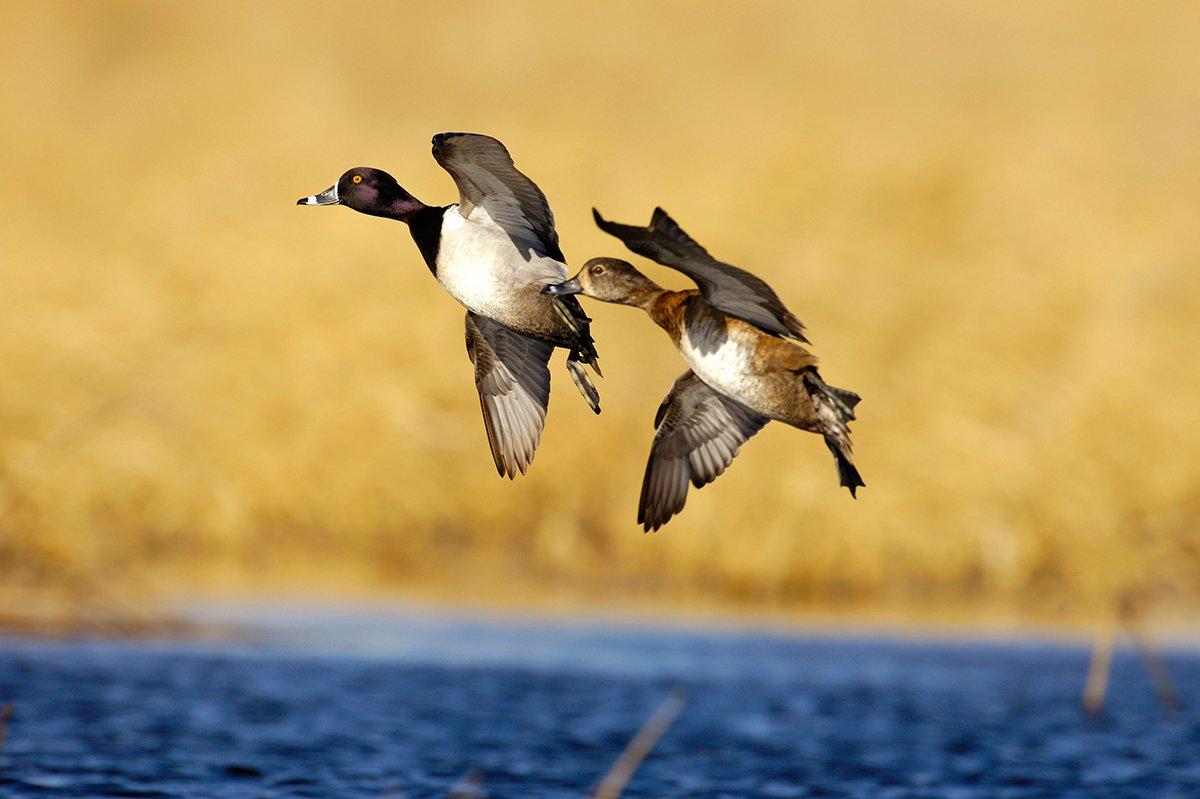Radio-Tracking Research Effort Quadruples in Size
The ringnecks are back. Well, Delta Waterfowl's radio-implanted ring-necked ducks, at least, and they're helping the organization continue its pioneering research into this important duck.
Beginning Nov. 28, Delta Waterfowl and its research partners inserted transmitters in 61 ringnecks — 30 originating in South Carolina and 31 more in southern Georgia and northern Florida, according to a Delta press release. This season's study includes two drakes. In November 2017, Delta implanted radios in 15 ringneck hens in the same area of Georgia and Florida. The transmitters let Dr. Mark McConnell and graduate assistant Tori Mezebish, of the University of Georgia, track movements of the hens at their wintering grounds and allowed them to follow the ducks' spring migration to Canadian breeding grounds before the transmitter batteries expired.
The release said researchers expect that longer battery life will extend tracking efforts to a full year this season, thanks to improvements in transmitter technology and a change in the way the radios are programmed to send data. Delta should be able to follow the Spring 2019 migration, track movements at the breeding grounds and capture the path of next fall's migration.
Notes from Delta's tracking maps have already revealed interesting facts about the radio-implanted ringbills. The 2018 South Carolina ringnecks were captured at a small flooded agricultural wetland just east of Lake Marion, according to the release. Four hens were shot during the weekend of Dec. 8 and 9, but the transmitters were recovered and will be reused. Movements have been minimal. Three birds made the longest moves, traveling 14 miles to a warm-water pond at a power plant, which gets heavy use during cold snaps. The average home range for the period was 10,213 acres, and the largest was 34,175 acres.
The release said most of the Georgia and Florida Red Hills ringnecks have stayed local, using several plantations: Four Oaks, Dixie, Pinckney Hill, Black Water, Rodina and Aucilla Run, Norias, and Tall Timbers. Most of the locations are on managed ponds, with only a few birds using larger waters of Lake Iamonia, Miccosukee or Bowen Mill Pond. The home range size averaged 15,433 acres.
The study, conducted cooperatively by Delta and the University of Georgia, is exciting for several reasons. Ringnecks have been studied far less than any of the most harvested duck species. Further, they are expanding in numbers and range, so the study marks one of the first times researchers can study a duck species on the upswing. In addition, this is the first time researchers have implanted radio transmitters in ringnecks to study their movements. Banding data for the species is lacking, so biologists know relatively little about the birds' migration routes or breeding destinations.
Click here for more Realtree waterfowl hunting content. And check us out on Facebook.







